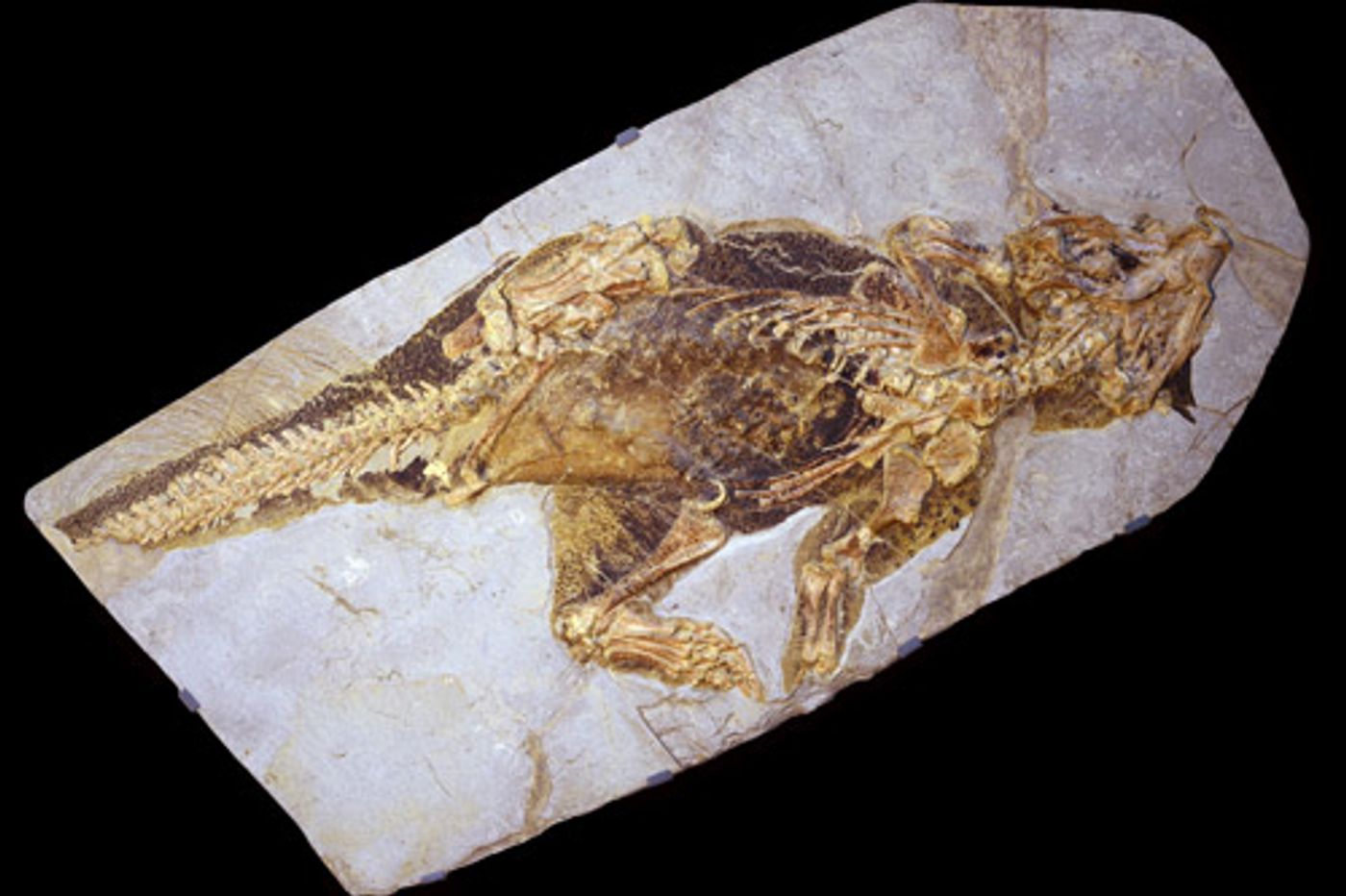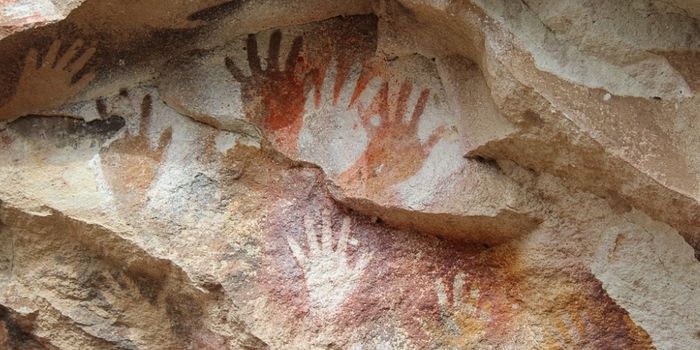Did Dinosaurs Use Camouflage to Survive?
Scientists led by Dr Jakob Vinther from the University of Bristol have used a well-preserved Cretaceous-period dinosaur fossil that was found in China to create a reconstruction of what the beast, known as a Psittacosaurus (or parrot lizard), may have looked like during its time of roaming the Earth.

Image Credit: Jakob Vinther and Robert Nicholls
Interestingly, the fossil had unusually-clear camouflage patterns that suggest it used a modern kind of predator avoidance known as countershading, which is where the bottom of the body is typically a lighter color and the top is darker. This would be the first time that such a camouflage would be discovered in dinosaurs.
Depending on how open or closed the roaming environment is, countershading can be an effective means of camouflage. It’s used not only by land animals and sea animals, but also by airplanes to help hide their presence. Nevertheless, the shading qualities of the Psittacosaurus is notably a little bit different.
“This one is unique,” says paleontologist Jakob Vinther of Britain’s University of Bristol, co-author of a study said while depicting the fossil in the journal Current Biology. “We can very clearly see that there are color patterns … stripes, spots.”
Being no more than just a plant-eater, the Psittacosaurus didn’t have much to protect itself, so the camouflage would have helped it to survive against a competitive predatory environment 120 million years ago. Other dinosaurs like the Tyrannosaurus Rex would have wanted to take a bite out of the Psittacosaurus.
To learn more about how this camouflage would have worked, the scientists built a scale model of the dinosaur and studied its effects on vision in different light environments. They tested it out in various environments, including sunny or cloudy days, as well as in wide-open and sheltered areas.

Image Credit: Jakob Vinther
It was found that the Psittacosaurus’ camouflage worked best in places of diffuse light, rather than in open sunlight. As a result, it can be deduced that this species likely roamed the forest.
The discovery of dinosaur camouflage is very important, as it supports our ongoing research about what dinosaurs may have looked like. There is a lot of evidence pointing to the fact that those scary gator-like dinosaurs you see in Hollywood films probably never existed. Instead, dinosaurs were probably much more bird-like in comparison.
As we uncover more about what dinosaurs looked like, we will be able to better understand life history on Earth. It's likely that the Psittacosaurus wasn't the only dinosaur species that used countershading to avoid predators.
Source: University of Bristol
-
MAY 07, 2024Is It Anti-RNP or Anti-Sm/RNP?
- See More
-
APR 30, 2024Immuno-Oncology Virtual Event Series 2024
-
MAY 07, 20243rd International Biosecurity Virtual Symposium
-
JUN 06, 2024The Future of Scientific Conferencing
- See More

















































